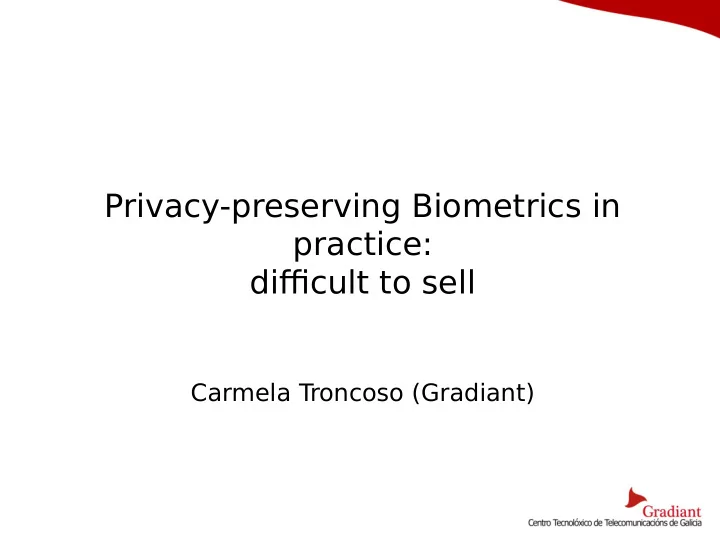

Privacy-preserving Biometrics in practice: diffjcult to sell Carmela Troncoso (Gradiant)
My experience with biometrics and privacy • Academic background on privacy • Gradiant’s goal: transfer of knowledge to industry – We bring state of the art technologies to the market • Multi-biometric portfolio: signature, face, voice,… – For diverse platforms (smartphone, tablet, PC,…) – Privacy-preserving versions • Companies demand biometric –based solutions – But they never choose the privacy-preserving option…
The usual interaction Biometrics are cool, I want biometrics in my product Of course I would like strong security and privacy High Cost Low Cost Low High Privacy Privacy Yes we can! but privacy does not come for free High Cost Low Cost Low High Privacy Privacy
The usual interaction (II) Hmmmm, but that means… High Cost Low Cost Low High Privacy Privacy Can’t we do something cheaper? Sure, but then there will be little Enough to comply privacy with regulation? I High Cost take it! Low Cost Low High Privacy Privacy
Why is it so diffjcult? Four reasons that hinder privacy technologies adoption • The legal framework does not require strong privacy for most applications – Spanish DPA does not consider templates sensitive in some cases • Users do not demand privacy in reality – Little understanding of the risks • Privacy comes at a cost – Implementation and integration requires more work – Performance • Industry sees value in having the raw data – Linkability among databases makes them a valuable asset (e.g., cookies and web advertising)
Conclusion T echnology advances fast and privacy-preserving solutions are available, but industry will not adopt them until they are required by the legal and socio-economic context
Recommend
More recommend